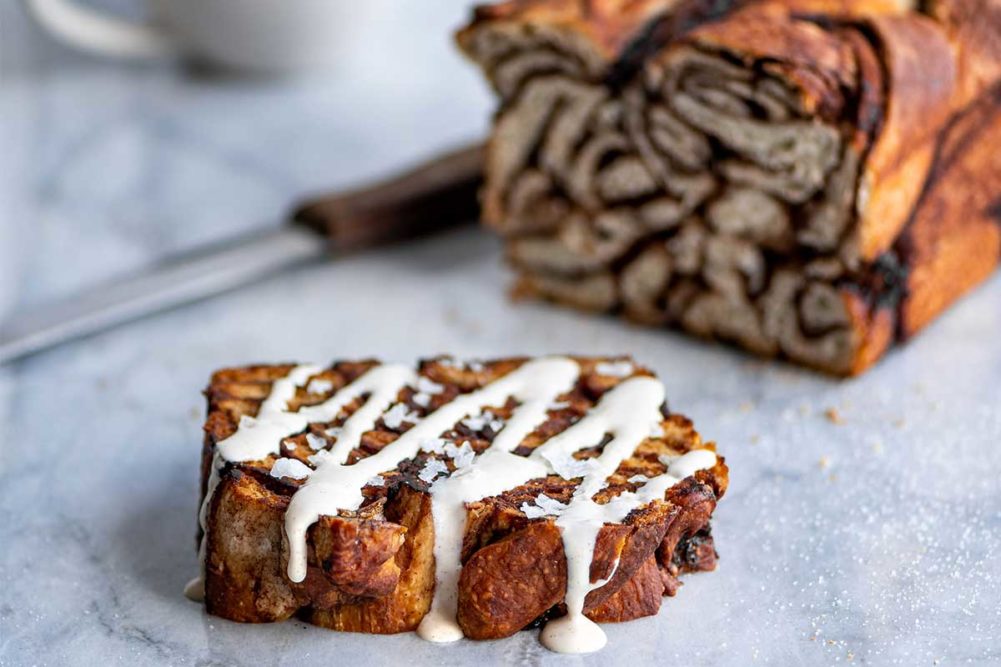Replacing a sweetener in a formulation may mean substituting one high-calorie sweetener with another, swapping out low-calorie options, or reducing the calorie count in a baked item by replacing a high-calorie option with a low-calorie one.
“Sugar is the hardest sweetener to replace because of all of its ‘gold standard’ properties that include texture, mouthfeel, bulking, taste and browning,” said Dave Douglass, business development manager, Apura Ingredients.
He said that in a sugar reduction formulation change, the company’s technical experts work with a customer’s research and development team to reduce sugar while maintaining taste and mouthfeel. Although one swap is not hard, he said.
“The one exception is switching out high fructose corn syrup with sugar since the sweetness and taste are similar,” Mr. Douglass added.
Using replacement ingredients that come in the same format as the original present fewer problems, said Eric Shinsato, senior project leader, innovation and technical service, sweeteners, Ingredion.
“Dry sweeteners will need to be replaced with another dry ingredient in most cases, while liquid sweeteners are easier to replace with other liquid sweeteners,” he explained. “In a frosting or icing, sucrose can be replaced with dextrose without a significant change in the finished product or processing.”
Going from sugar or another high-calorie sweetener to a low-calorie option presents numerous challenges.
“The sugar reduction holy grail to food and beverage brand owners is replacing sucrose with a single ingredient or a combination of ingredients, at or near the same price as sucrose, but without the calories of sucrose,” said Kyle Krause, Beneo product manager, functional fibers and carbohydrates, North America.
“This is difficult to do, and the challenge becomes even bigger given the current difficult supply chain for food ingredients. So brands must consider their options and the benefits sugar replacing ingredients provide, such as their sweetening profile, calories and glycemic profile, to name a few attributes, that they will lend to the final packaged food.”
Amy Targan, president of Malt Products Corp., said that domestic supplies can mitigate some supply chain problems and that agile companies have an advantage because they are willing to make changes based on market conditions.
For example, she said that one pretzel maker, in an effort to save on costs, had been using a blend of malt extract and glucose, which was sourced from imported tapioca. But the company pivoted away from the glucose as the price of tapioca rose.
“We suggested to this customer that they revert back to their original formulation of 100% malt extract,” Ms. Targan said. “They took this advice and not only saved money, but the quality of their finished product also improved, thus garnering them additional market share. This kind of solution was possible because the customer was willing to be agile when it came to reformulating and relabeling.”
Consumers today are interested in products with clean, all-natural ingredients. Emergen Research said the global natural sweeteners market will grow to $5.3 billion in 2030, a nearly 7% compound annual growth rate from 2021 to 2030. Increasing use of stevia, honey, coconut, sugar, monk fruit and other sweeteners is forecast to drive the growth.
Honey is up to 1.5 times sweeter than sugar and delivers multiple benefits such as sweetness, flavor and functionality, said Catherine Barry, director of marketing at the National Honey Board.
“Honey also has more than 3,000 varietals, each with a unique color, taste and flavor,” she said. “Bakers and snack manufacturers can sweeten and add a unique flavor to products by using varietal honeys.”
It also brings functionality, acts as a natural shelf life extender, mold inhibitor and binder in products such as nut- and seed-dense food bars, Ms. Barry added.
“Consumers love honey, view it as natural and understand they’re supporting beekeepers and honeybee health when they purchase products with honey,” she said.
A natural sweetening system that eliminates added sugar and uses sweeteners and fibers that aid in functionality and leavening can deliver good results, said Thom King, chief executive officer of Icon Foods.
“In my formulation experience, the best combination is a sweetening system that contains allulose for its functionality in Maillard and leavening, erythritol to suppress burn point, soluble tapioca fiber to create humectancy and bulk, and a combination of stevia and monk fruit in very small amounts to bring these sweeteners to parity with the sweetness in sugar,” Mr. King said. “This would be the gold standard for clean label sugar reduction in baked goods.”
This article is an excerpt from the May 2022 issue of Baking & Snack. To read the entire feature on Sweeteners, click here.






